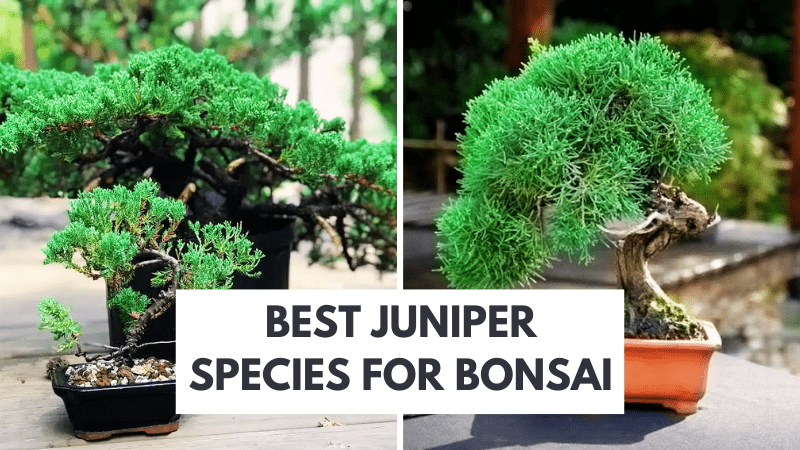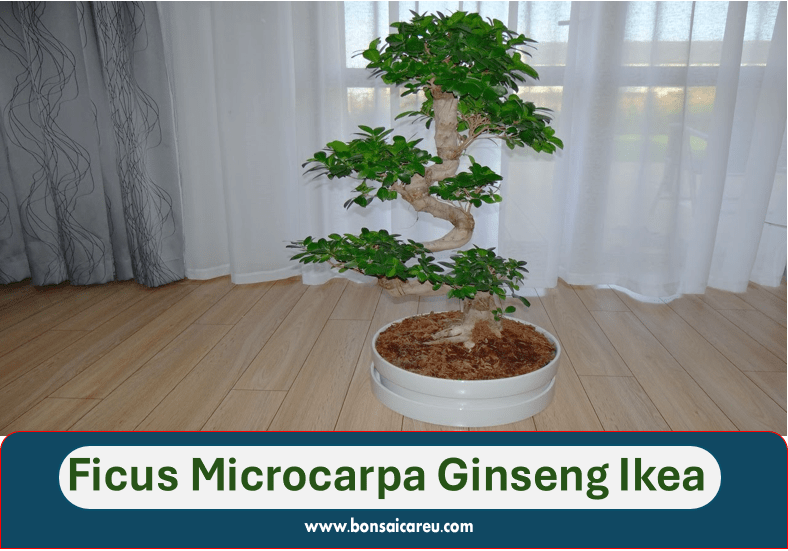Best Juniper Species for Bonsai include Juniperus procumbens, Juniperus chinensis, and Juniperus rigida. These species are popular for their adaptability and attractive foliage, making them ideal for bonsai cultivation.
Junipers are known for their rugged appearance and are well-suited for bonsai due to their small leaves and ability to withstand pruning and shaping. Their hardy nature allows them to thrive in various climates, making them a versatile choice for bonsai enthusiasts.
With proper care and techniques, Juniper species can be transformed into stunning bonsai specimens that embody the beauty and tranquility of nature.

Best Juniper Species for Bonsai
Explore the beauty of Juniper species tailored for bonsai artistry. Discover the intricate techniques to cultivate stunning Juniper Bonsai. Master the art of shaping and nurturing these exquisite miniature trees for a serene and harmonious ambiance.
Roots In Tradition
Bonsai, the ancient Japanese art form of cultivating miniature trees, has captivated enthusiasts for centuries. Among the various species used in bonsai, Junipers hold a special place. With their natural elegance and adaptability, Junipers have become synonymous with the art of bonsai.
The tradition of using Junipers in bonsai can be traced back to ancient China, where the practice originated. Junipers, known for their hardiness and ability to withstand harsh conditions, symbolize strength and resilience. These characteristics make them ideal candidates for bonsai, as they can endure the rigorous pruning and shaping techniques required to create captivating miniature trees.
Popularity Of Junipers In Bonsai
Junipers have gained immense popularity among bonsai enthusiasts worldwide. Their unique growth patterns, beautiful foliage, and ability to adapt to different styles make them highly sought-after for bonsai cultivation.
One of the reasons behind the popularity of Junipers in bonsai is their versatility. Whether you prefer a formal upright style, cascading style, or even a windswept appearance, Junipers can be trained to embody these aesthetics with ease. Their flexible branches and dense foliage allow for intricate shaping and styling, resulting in breathtaking bonsai specimens.
Additionally, Junipers offer a wide range of variety, with numerous species and cultivars available to choose from. Each Juniper species brings its own unique characteristics, such as needle size, color, and growth habit, adding diversity to any bonsai collection.
Another factor contributing to the popularity of Junipers in bonsai is their relative ease of care. Junipers are known for their resilience and adaptability, making them suitable for both novice and experienced bonsai enthusiasts. With proper care, including regular watering, balanced fertilization, and appropriate pruning, Junipers can thrive and continue to enchant their caretakers for years to come.
Selecting The Right Juniper Species
Selecting the right Juniper species for bonsai involves considering size, foliage, and growth patterns. Some popular choices include Juniper Procumbens Nana, Juniper Chinensis, and Juniper Squamata. Each species offers unique characteristics to create stunning bonsai creations.
Selecting the right Juniper species is an essential factor in Bonsai. With over 70 species of Junipers available, choosing the one that fits your needs is crucial. In this section, we’ll discuss the common varieties for Bonsai and the factors you should consider when selecting a Juniper species.
Common Varieties For Bonsai
Juniperus Procumbens Nana, Juniperus Chinensis, and Juniperus Sabina are Bonsai’s most popular Juniper species. Juniperus Procumbens Nana, also known as the Japanese Garden Juniper, is an excellent choice for beginners. It’s easy to care for and has a beautiful cascading habit that suits most Bonsai styles. Juniperus Chinensis, also known as the Chinese Juniper, has a more upright habit and is ideal for formal Bonsai styles. Juniperus Sabina, also known as the Savin Juniper, has a unique shaggy bark that makes it an excellent choice for informal Bonsai styles.
Factors For Choosing A Juniper
When selecting a Juniper species for Bonsai, there are several factors you should consider. These include:
- Climate: Choose a Juniper species that can thrive in your climate.
- Size: Consider the size of your Bonsai pot and choose a Juniper species that can fit comfortably.
- Style: Choose a Juniper species that suits the Bonsai style you want to create.
- Growth rate: Consider the growth rate of the Juniper species and choose one that fits your desired maintenance routine.
- Hardiness: Choose a Juniper species that can withstand the temperatures in your area.
In conclusion, selecting the right Juniper species is crucial for creating a successful Bonsai. Consider the common varieties and factors discussed above to make an informed decision. Remember to choose a Juniper species that suits your needs, style, and climate for the best results.
Cultivation Secrets For Juniper Bonsai
Juniper species are popular choices for bonsai enthusiasts due to their resilience and adaptability. Understanding the cultivation secrets is essential to ensuring your Juniper bonsai thrives.
Optimal Growing Conditions
- Place Juniper Bonsai in well-draining soil to prevent root rot.
- Ensure the bonsai receives ample sunlight for healthy growth.
- Maintain consistent watering, allowing the soil to slightly dry between waterings.
- Protect the bonsai from extreme temperatures to avoid stress.
Pruning And Shaping Techniques
- Regularly prune the Juniper Bonsai to maintain its shape and encourage new growth.
- Use sharp bonsai shears to make clean cuts and avoid damaging the branches.
- Apply wire carefully to guide the branches into desired shapes, avoiding constricting the tree.
- Allow the Juniper Bonsai to rest after major shaping to recover and avoid stress.
Styling Your Juniper Bonsai
When styling your Juniper bonsai, it’s crucial to understand the design principles and styles that will enhance its beauty. Additionally, mastering wiring and repotting essentials is essential for maintaining its health and vigor.
Design Principles And Styles
Designing your Juniper bonsai involves understanding key principles and styles. Emphasize balance, asymmetry, and harmony in your design. Utilize the formal upright, informal upright, slanting, semi-cascade, and cascade styles to create visual interest.
Wiring And Repotting Essentials
Wiring is a crucial technique for shaping your Juniper bonsai. Use aluminum or copper wire to gently bend and position branches, ensuring not damage the delicate foliage. Report your Juniper bonsai every 2-3 years to refresh the soil and maintain its health.
Maintaining The Health Of Your Bonsai
To maintain the health of your Juniper bonsai, ensure it receives ample sunlight and well-draining soil. Prune the branches regularly to maintain their shape and repot every few years to refresh the soil and provide essential nutrients. Regular watering is crucial, ensuring the soil remains moist but not waterlogged.
Maintaining the Health of Your Bonsai Watering and Feeding Schedule To keep your Juniper bonsai thriving, it is crucial to establish a proper watering and feeding schedule. Watering your bonsai should be done regularly but not excessively. Overwatering can lead to root rot and other issues, while underwatering can cause the tree to dry out and wither. To ensure the right balance, check the soil’s moisture level regularly by inserting your finger about an inch deep. If it feels dry, it’s time to water your bonsai. When watering, pour water slowly over the soil until it drains out from the drainage holes at the bottom of the pot. This ensures that the roots are thoroughly soaked.
Showcasing Your Juniper Bonsai
Displaying your Juniper bonsai is a delightful way to share its beauty with others. Whether you are a seasoned enthusiast or a newcomer, showcasing your Juniper bonsai can be a rewarding experience. Below, you will find tips on how to display your Juniper bonsai and connect with bonsai communities.
Display Tips For Enhanced Appeal
When displaying your Juniper bonsai, consider the following tips to enhance its visual appeal:
- Choose a suitable stand or tabletop for your bonsai display.
- Position the bonsai to showcase its best features, such as unique trunk movements or foliage patterns.
- Use accent elements like small figurines or decorative rocks to complement the bonsai.
- Rotate the bonsai periodically to ensure even growth and sun exposure.
Juniper Tree Bonsai Best Care
Joining Bonsai Communities
Joining bonsai communities can offer valuable insights and networking opportunities. Consider participating in local bonsai clubs or online forums to share your passion for Juniper bonsai and learn from fellow enthusiasts.
Frequently Asked Questions
What Kind Of Juniper Is Used For Bonsai?
The most commonly used juniper for bonsai is the Juniperus procumbens. It is a low-growing shrub with small, needle-like leaves and a flexible trunk that lends itself well to shaping and pruning in bonsai art.
How To Identify Juniper Species?
Identify juniper species by examining the foliage, berries, and growth habit. Compare with field guides.
What Is The Best Juniper Chinensis For Bonsai?
The best Juniper Chinensis for bonsai is the “Shimpaku” variety. It is favored for its elegant foliage and graceful growth pattern.
How Do You Identify A Juniper Bonsai Tree?
A juniper bonsai tree can be identified by its needle-like leaves, which are typically dark green or blue-green in color. The tree also has a distinctive bark, which is often reddish-brown in color and peels off in thin strips. Additionally, juniper bonsai trees produce small, berry-like fruits that are bluish-black.
Which Juniper Species Are Best For Bonsai?
Juniperus procumbens ‘Nana’ and Juniperus chinensis are popular choices for bonsai due to their adaptability.
How Often Should I Water My Juniper Bonsai?
Water your Juniper bonsai when the topsoil feels slightly dry to the touch, usually every 2-3 days.
Conclusion
Juniper species make excellent choices for bonsai enthusiasts due to their unique characteristics and adaptability to various environments. From the popular Juniperus chinensis to the less commonly used Juniperus rigida, each species offers its own aesthetic appeal and challenges for cultivators.
With proper care and attention, Juniper bonsai trees can thrive for many years, providing a beautiful and calming addition to any space. So, consider adding a Juniper bonsai tree to your collection whether you are a beginner or an experienced bonsai grower.


